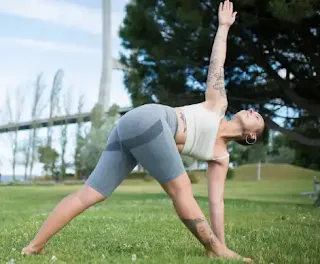Exercising During Your Period: Benefits and Things to Avoid
Exercising while on your period may seem counterintuitive, but it can help relieve menstrual symptoms. However, there are some limitations to be aware of.
Most people can benefit from exercise in promoting a healthy lifestyle. This is especially true when it comes to hormonal balance. Some exercises and techniques may be beneficial during your period, while others should be avoided. The following article discusses the dos and don'ts of exercising during your period.
Benefits of exercising during your period
When you're on your period, the last thing you want to do is exercise, and there are numerous myths about exercise in general. However, doing some light exercise during your period has been shown to help with a variety of symptoms, including:
These are just a few of the advantages of exercising during your period. Furthermore, general physical fitness is beneficial to health and can lower the risk of serious medical issues such as heart attack, stroke, arthritis, osteoporosis, and diabetes. Exercise does not have to be strenuous or occur on a daily basis to be beneficial. According to a recent study, exercise can help with at least 30 chronic diseases.
Exercise can help to alleviate some of the physical and chemical changes that occur in the body during menstruation. Exercise, in fact, can boost the production of endorphins ("feel-good hormones") and reduce anxiety, depression, and pain, thereby improving your mood.
Best exercises to do on your period
Most people believe that during your period, you should do exercises that you can tolerate, are good for your body, and that you enjoy. Many women find that the first day or two of their period is not the best time to exercise. This is usually due to a higher flow. You may feel more at ease exercising at home during this time. If the first few days of your period are challenging, take it easy and modify your workouts as needed.
So, what are the best workouts to do during your period? Here are a couple of ideas:
Walking: Walking is a simple exercise that requires no special equipment, clothing, or location. You can take as much time as you want or need, and you can set your own pace.
Light cardio or aerobic exercise: This is not a strenuous workout. "Light" is the key word here. Take it easy and/or consider a shorter workout than usual if you're jogging, cycling, swimming, or doing anything else.
Strength training: If you're up for it, try some gentle strength exercises with lighter weights than you're used to. Heavy lifting should be avoided at this point in your cycle.
Gentle stretching and balancing: Yoga is excellent for relaxing muscles and reducing cramps and pain. Pilates is excellent for stretching muscles and alleviating cramps and pain. Tai chi is beneficial for reducing tension and stress.
Exercising while on your period: Things to avoid
Exercising during your period should not put additional strain on your body, cause pain, or disrupt the normal cycle process. Exercise can be beneficial during your period, but there are some things to avoid, including the following:
Period hygiene when exercising
It is critical to maintaining good hygiene during your period, including while exercising. Here are some fundamental guidelines. First, select period products that you are familiar with. If you're worried about leaks while exercising during your period, you could use a tampon. However, if you don't normally use tampons, now is not the time to experiment with them. If not properly inserted, they can be distracting or painful.
For some people, other period products, such as pads, menstrual cups, and discs, work just as well as or better than tampons. You can also combine some of these products to prevent stains on your underwear. Use whichever method works best for you.
Carrying period products with you when you exercise is a good idea in case your period starts earlier than expected. Hormonal fluctuations may be to blame.
Following exercise:
Remember that even if you are nearing the end of your period, increased movement, changing positions, or stretching during exercise may result in spotting. This is normal and can usually be avoided by using pantyliners or period products. However, if you experience spotting between periods for unexplained reasons, you should see your doctor.

